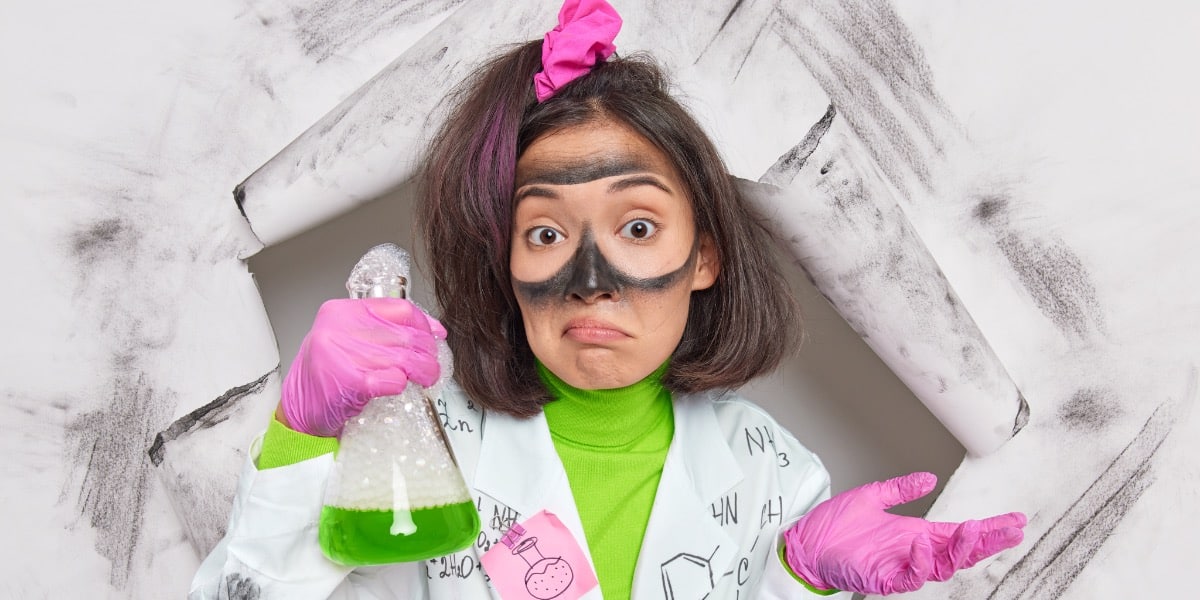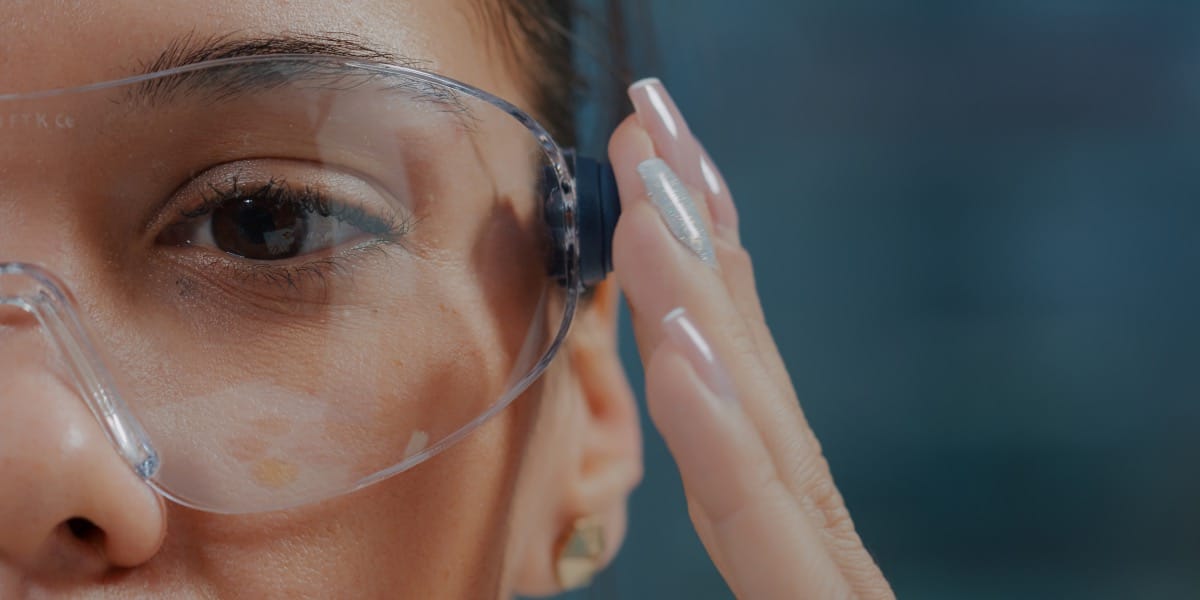PPE for Eye and Face Protection—Better Safe than Sorry!

Listen to one of our scientific editorial team members read this article.
Click here to access more audio articles or subscribe.
Personal Protective Equipment (PPE) is designed to protect you from hazards in the lab. When you think of PPE in the lab, I bet your first thought is probably a lab coat and gloves. But what about PPE for eye and face protection?
Like all PPE, goggles and face shields are your last line of defense against the many lab hazards that may harm you. While eye and face protection may not be required for all experiments, it is important to wear them during certain applications to protect key areas where chemicals can enter the body (like the eyes, ears, nose, and mouth).
But not all goggles and face shields are equal! To help you keep safe and sound, we’ve reviewed the most common types of PPE for eye and face protection and provide some pointers on when (and when not) to use them and how to tell them apart.
Why You Should Wear Eye and Face PPE in the Lab
Putting on a pair of gloves is second nature in a lab, and even lab coats are a common sight. But the same can’t be said of eye and face protection.
But it really should. Your eyes are precious and irreplaceable, and there are so many opportunities for something to splash into them and potentially cause harm. Think about the chemicals you use daily in the lab. Would you want them splashing in your eyes?
But it’s not just the risk of chemical splashes you need to be concerned about. Biological contaminants, aerosols, lasers, UV light, and physical dangers are all real and present dangers in the lab.
We spend much of our time up close and personal with dangers in the lab, so protecting your eyes and face is the smart thing to do if it prevents an eye or facial injury.
But what type of PPE should you use? Let’s go through each type and when they are best used.
What Types of Eye and Face Protection Are Available?
Glasses and goggles are designed specifically for eye safety to protect you against a specific type of lab hazard. These include impacts and explosions, chemical splashes, ultraviolet (UV) light, and laser light. Any protective lab eyewear should be kept clean—dirty lenses are a hazard too!
1. Safety Glasses
These sturdy glasses protect your eyes from impacts, flying particles, and minor chemical splashes. Their frames often have perforations and don’t seal to your face, as shown in Figure 1—so they can’t protect you against burns from hazardous chemicals.

In the U.S., safety glasses should have “Z87” stamped on their frame, indicating that they are rated to protect you against impact.
2. Chemical Goggles
Unlike safety glasses, chemical goggles (shown in Figure 2) can resist accidental splashes from larger amounts of chemicals and corrosives. Goggles can help protect you from chemical explosions, such as when working with glassware under pressure or extreme temperature. But make sure you match the goggles to the hazard—some goggles have vents on the side to reduce fogging, which also limits their protection against splashes. You can avoid this problem by using unvented goggles with fog-free lenses, or by using goggles with indirect ventilation.

3. Visorgogs
These hybrid goggle–safety glasses offer some impact resistance and better splash protection than safety glasses. However, they don’t seal to your face and therefore aren’t the best protection against splashes.
4. Ultraviolet-Resistant Goggles
These goggles protect your eyes (but not your whole face!) from getting burned by UV light from transilluminators or germicidal lamps. UV goggles are usually stamped with a “UV” symbol or with “Z87.1”, indicating they are rated to protect against UV. Check with the manufacturer if you don’t see a symbol. UV is particularly dangerous because you don’t feel its effects during exposure—there’s a delay between exposure and when you develop a burn!
5. Laser-Resistant Goggles
If you work with lasers, for example, in microscopy experiments, you will need to consider a different type of PPE for the eyes and face. Laser safety goggles can protect your eyes against laser light at particular wavelengths and frequencies. But don’t count on these goggles to protect you against chemicals and impacts!
What about Glasses and Contact Lens Wearers?
If you require prescription eyewear, it is important to remember that most prescription eyewear doesn’t meet the required safety standards. Therefore these glasses can’t be used as a replacement for PPE for eyes! Prescription safety eyewear is becoming increasingly available and might be worth the extra cost in the relevant circumstances.
If you’re someone who has a prescription for sight but prefers to use contact lenses, you need to consider what eye (and face) protection is required. Typically, you should wear the recommended PPE to protect your eyes and face.
6. Splash/Impact Face Shields
Safety glasses or goggles don’t protect your face and neck—and because many don’t seal to your face, chemicals can still splash into your eyes. So consider wearing a face shield over your eyewear to protect your face against impacts, sparks, chemical splashes, and UV light. But be sure you’re wearing a face shield that can protect you against the hazard!
Most face shields in the lab are designed to be secondary protection against chemical splashes, sparks, and (if they are marked with “Z87”) impacts.
7. Ultraviolet-Resistant Face Shields
These face shields are designed to specifically protect your face against UV light. To make sure a face shield can protect you against UV, look for a mark on it that says “UV” or “U” followed by a number from 2–6. Don’t forget to protect the rest of yourself by wearing a lab coat and appropriate gloves!
Along with gloves and lab coats, goggles and face shields are vital to protecting you against the lab’s many chemical and non-chemical hazards!
To learn more about eye and face protection, go to the links below, or visit our downloads page to pick up a copy of our eBook: The Bitesize Bio Guide to Lab Safety.
For More Information on Eye and Face Protection:
- Cornell University Environmental Health & Safety. Eye Protection. (Accessed 29 September 2022)
- Harvard University Environmental Health & Safety. PPE Selection Guide by Task. (Accessed 29 September 2022)
- National Academies of Science. Prudent Practices in the Laboratory: Handling and Management of Chemical Hazards. General Procedures for Working with Hazardous Chemicals.
- Occupational Safety & Health Administration. Eye and Face Protection eTool. PPE Selection – Chemicals: Goggles.
- Princeton University Environmental Health & Safety. Controlling Chemical Exposure.
Originally published February 2015. Reviewed and updated December 2022.